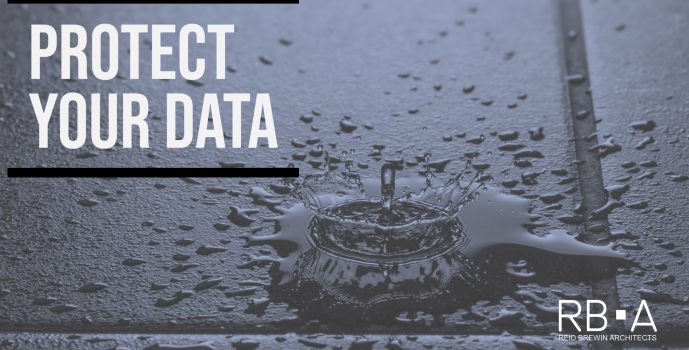At Reid Brewin Architects, our design philosophy is fortified by a promise to create structures that harmonise aesthetic allure with supreme functionality and security standards. Recent occurrences like the regrettable incident at the MaxNod data centre in France, highlighted by Data Center Dynamics, underline the critical necessity of exhaustive safety protocols in data centre design and operation. Key to these protocols is waterproofing, leak prevention, and advanced leak detection.
Waterproofing: A Crucial Component of Data Centre Design
Waterproofing, despite its significant role, is often underemphasised in data centre design and construction. A myriad of sources, such as cooling system leaks, heavy rainfall, plumbing malfunctions, or even unexpected circumstances like floods, can induce water damage, posing a grave risk to sensitive electronic equipment.
At Reid Brewin Architects, we prioritise waterproofing within our designs, from applying sealants and waterproof barriers to establishing proper drainage systems, all targeted at substantially diminishing the risk of water-related damages.
We leverage BIM technology to incorporate these vital waterproofing protocols into the design process from the onset. BIM empowers us to generate intricate 3D models that accurately represent the physical and functional facets of a building, including strategic placement of waterproofing methods. This facilitates the early identification and resolution of potential design issues that could lead to water ingress before construction commences.
Leak Prevention: Proactive Defence for Superior Safety
Regular inspections and maintenance of crucial infrastructure, such as plumbing and cooling systems, are essential for identifying and addressing potential leak sources, making leak prevention the first line of defence against potential water damage in data centres.
At Reid Brewin Architects, we incorporate leak prevention strategies into our architectural designs using BIM from the inception. This technology enables us to simulate various scenarios, such as potential leaks from plumbing and cooling systems, and design corresponding preventive measures. For example, our BIM-assisted approach allows for strategically positioning sensitive equipment away from potential water sources, using sloping floors to redirect water, and selecting construction materials with high waterproofing properties.
Leak Detection: The Essential Safety Buffer
Despite implementing robust leak prevention strategies, the possibility of leaks can never be entirely eliminated. Hence, the deployment of a reliable leak detection system is of paramount importance. These systems utilise sensors to detect water presence in areas it shouldn’t be. The system swiftly notifies personnel upon leak detection, enabling them to respond promptly and minimise any potential damage.
Modern leak detection systems offer seamless integration with BIM and building management systems (BMS) for real-time monitoring and automated responses. Implementing such strategies requires meticulous collaboration between architects, engineers, and IT specialists.
At Reid Brewin Architects, we foster an environment of interdisciplinary collaboration, ensuring all project facets, from architectural design to IT infrastructure, synchronise towards a common objective of safety and efficiency.
The Paramount Importance of Waterproofing, Leak Prevention, and Leak Detection in Data Centre Safety
The incident at the MaxNod data centre serves as a stark reminder of the importance of comprehensive safety measures in data centres. While fire prevention often attracts attention, waterproofing, leak prevention, and leak detection are equally crucial.
In our progressively digital world, we at Reid Brewin Architects acknowledge that preserving data centre integrity extends beyond business continuity; it is a societal necessity. Thus, we underscore the integration of waterproofing, leak prevention, and leak detection strategies into our architectural designs.








